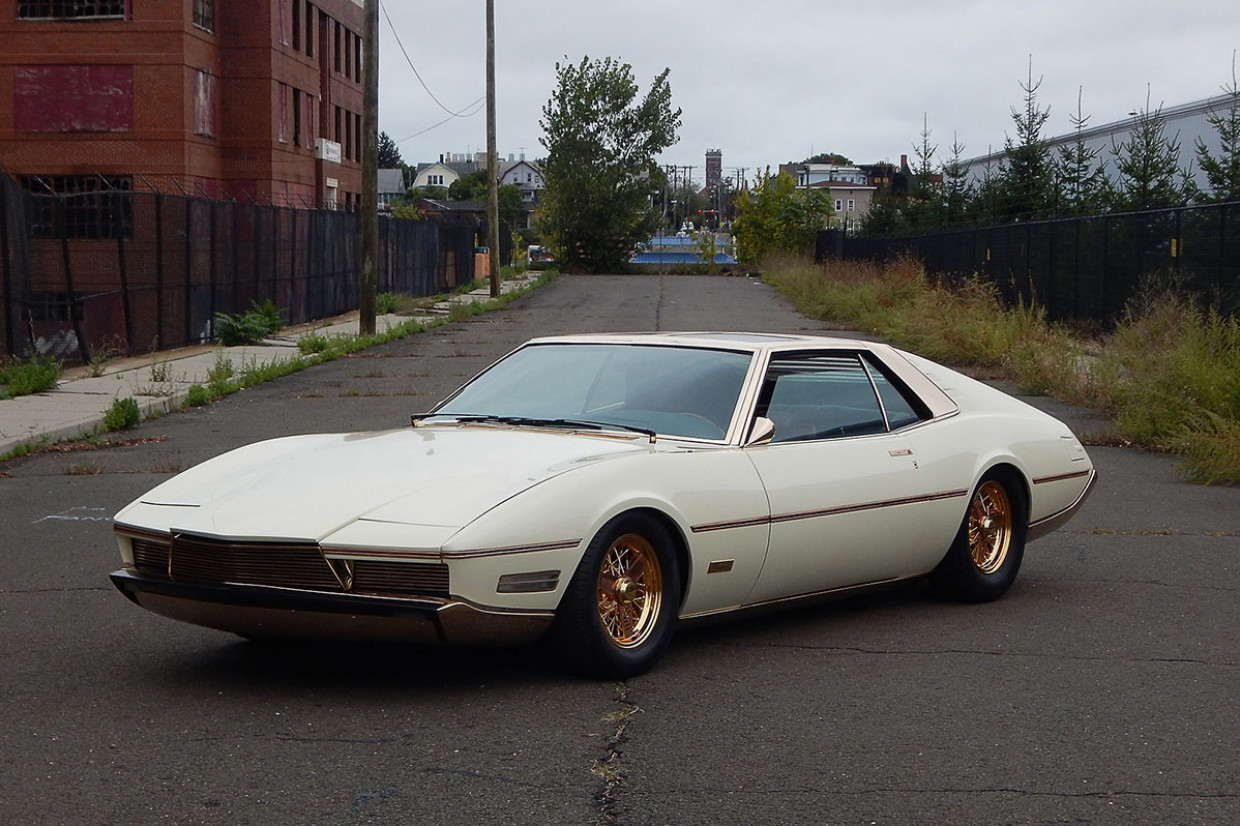
The 1960s was a decade of tumultuous social, economic and technological change, but also of a great optimism – a time of confidence and expectation that few cars encapsulate better than the 1967 Exemplar, the fantastically artistic vision of Mario Revelli.

Born in Rome in 1907, Mario Revelli de Beaumont began his design career aged just 17, when he created a racing motorcycle that brought him victory at the very first Coppa del Mondo at Monza in 1925. Following his success, he swapped from two wheels to four and took up automobile design, submitting his work to the most renowned coachbuilders of the period: Giovanni Farina, Ghia, Casaro, Carrozzeria Moderna, Sala and, latterly, Castagna.

Between 1929 and 1931, he collaborated with Fiat's special coachwork division, clothing a number of Rolls-Royce chassis, as well as creating racing coachwork for the Maserati 1500 and the ill-fated radial-engined Trossi-Monaco Grand Prix car of 1935. He produced the beautiful Lancia Augusta Farina Coupé in the same year.

As well as proving to be an accomplished designer, Revelli exhibited a flair for invention, patenting a number of accessories, such as an adjustable wind deflector, a window-winding mechanism and a vertical lock.

After WW2, Revelli resumed work with Pinin Farina and Fiat, also finding gainful employment at Cansa, then Simca in Paris, eventually designing the Revelli-Figoni 'two-volume' sedan before moving to General Motors. It was in 1967, while at Coggiola – the design house responsible for the Pontiac Farago CF 428 – that work finally began on the Exemplar 1, a futuristic concept car commissioned by the Bridgeport Brass Company and the Copper Development Association to showcase the use of bronze and copper.

The purpose of Exemplar 1 was to present the automotive world with engineering innovations that improved safety, comfort and performance, while demonstrating new applications for copper and bronze. You need look no further than the interior to see the commitment to its task: a broad spectrum of 11 distinct hues of standard copper alloy was applied, ranging from reddish-orange copper through to the golds and browns of brass and bronze and the soft silver shades of copper-nickel and nickel silver alloys.

The two-tier instrument and control panels are also finished with polished copper, complemented by its padded dashboard. In fact, it’s difficult to find a single area of the Exemplar 1’s cabin that hasn’t been manufactured out of, or embellished by, the two metals, including the centre console, steering wheel and horn button, which are all trimmed in copper. Even the A-pillars, scuff plates and the powered-seat controls have been lavished in copper.

The cockpit is bettered only by the car’s stunning exterior, where the theme continues. Most striking are the custom brass-plated Borrani knock-off wire wheels, which combine beautifully with other brass accents, such as the rear window shutters. Its front and rear bumpers are given similar treatment, while the overall lines of the Revelli-penned body’s delta shape echoes the Lamborghini Miura. Its long, sloping bonnet, low belt-line and short rear only serve to emphasise its streamlined appearance.

In addition to using copper for styling and decoration, Revelli took full advantage of the outstanding engineering properties of the metals. Exemplar 1 features copper disc brakes, brake lines and twin polished copper radiators – one for cooling the engine and the other for the air conditioning. Mechanically, the chassis is a modified Buick Grand Sport unit, while power is provided by a polished, copper-trimmed 430cu in V8 engine producing 360bhp at 5000rpm. The automatic transmission is allied to a positive traction differential with a final drive of 3.42, plus heavy-duty suspension.

When the car was completed by Coggiola late in 1967, it was shipped to the United States to the Bridgeport Brass Company in Bridgeport, Connecticut, where it was unveiled to the leaders of the National Distillers and Chemical Corporation, the National Copper Association, and to the public.

It then toured the United States to demonstrate and promote the use of copper and copper alloys, being shown at the New York Auto Show, where it gained huge attention for both its radical use of metals and its outstanding beauty. It was eventually decommissioned by the National Distillers and Chemical Corporation toward the end of the decade, and was on track to be destroyed due to having never been inspected for road use by the department of motor vehicles.

However, a late intervention by Herman Steinkraus, president of the Bridgeport Brass Company, gave the car a stay of execution. He bought it from the National Distillers and Chemical Corporation in 1970, and took it to his 25-acre estate in Darien, Connecticut where it was kept under cover and out of sight for the next 20 years. Steinkraus passed away in the late 1980s and the car was sold by his estate, passing into the private collection of Manny and George Dragone, of Dragone Classic Motorcars.

More than 25 years in storage followed before it was finally restored to its original condition, as envisioned by Mario Revelli de Beaumont. Exemplar 1 is now being offered for sale at the Dragone Fall Auction on 17 October 2015.






